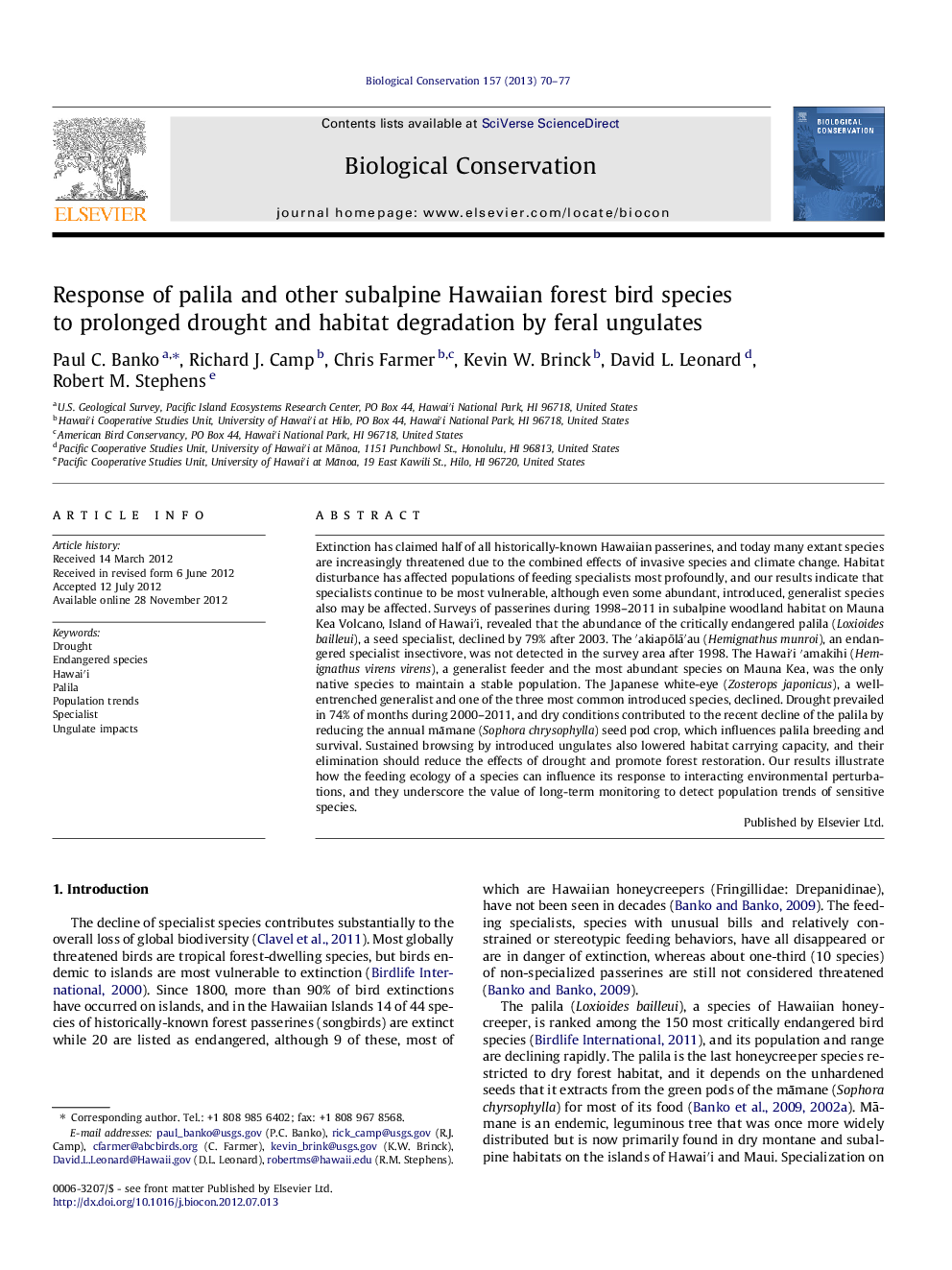| کد مقاله | کد نشریه | سال انتشار | مقاله انگلیسی | نسخه تمام متن |
|---|---|---|---|---|
| 4385190 | 1617944 | 2013 | 8 صفحه PDF | دانلود رایگان |
عنوان انگلیسی مقاله ISI
Response of palila and other subalpine Hawaiian forest bird species to prolonged drought and habitat degradation by feral ungulates
دانلود مقاله + سفارش ترجمه
دانلود مقاله ISI انگلیسی
رایگان برای ایرانیان
کلمات کلیدی
موضوعات مرتبط
علوم زیستی و بیوفناوری
علوم کشاورزی و بیولوژیک
بوم شناسی، تکامل، رفتار و سامانه شناسی
پیش نمایش صفحه اول مقاله

چکیده انگلیسی
Extinction has claimed half of all historically-known Hawaiian passerines, and today many extant species are increasingly threatened due to the combined effects of invasive species and climate change. Habitat disturbance has affected populations of feeding specialists most profoundly, and our results indicate that specialists continue to be most vulnerable, although even some abundant, introduced, generalist species also may be affected. Surveys of passerines during 1998-2011 in subalpine woodland habitat on Mauna Kea Volcano, Island of Hawaiâ²i, revealed that the abundance of the critically endangered palila (Loxioides bailleui), a seed specialist, declined by 79% after 2003. The â²akiapÅlÄâ²au (Hemignathus munroi), an endangered specialist insectivore, was not detected in the survey area after 1998. The Hawaiâ²i â²amakihi (Hemignathus virens virens), a generalist feeder and the most abundant species on Mauna Kea, was the only native species to maintain a stable population. The Japanese white-eye (Zosterops japonicus), a well-entrenched generalist and one of the three most common introduced species, declined. Drought prevailed in 74% of months during 2000-2011, and dry conditions contributed to the recent decline of the palila by reducing the annual mÄmane (Sophora chrysophylla) seed pod crop, which influences palila breeding and survival. Sustained browsing by introduced ungulates also lowered habitat carrying capacity, and their elimination should reduce the effects of drought and promote forest restoration. Our results illustrate how the feeding ecology of a species can influence its response to interacting environmental perturbations, and they underscore the value of long-term monitoring to detect population trends of sensitive species.
ناشر
Database: Elsevier - ScienceDirect (ساینس دایرکت)
Journal: Biological Conservation - Volume 157, January 2013, Pages 70-77
Journal: Biological Conservation - Volume 157, January 2013, Pages 70-77
نویسندگان
Paul C. Banko, Richard J. Camp, Chris Farmer, Kevin W. Brinck, David L. Leonard, Robert M. Stephens,